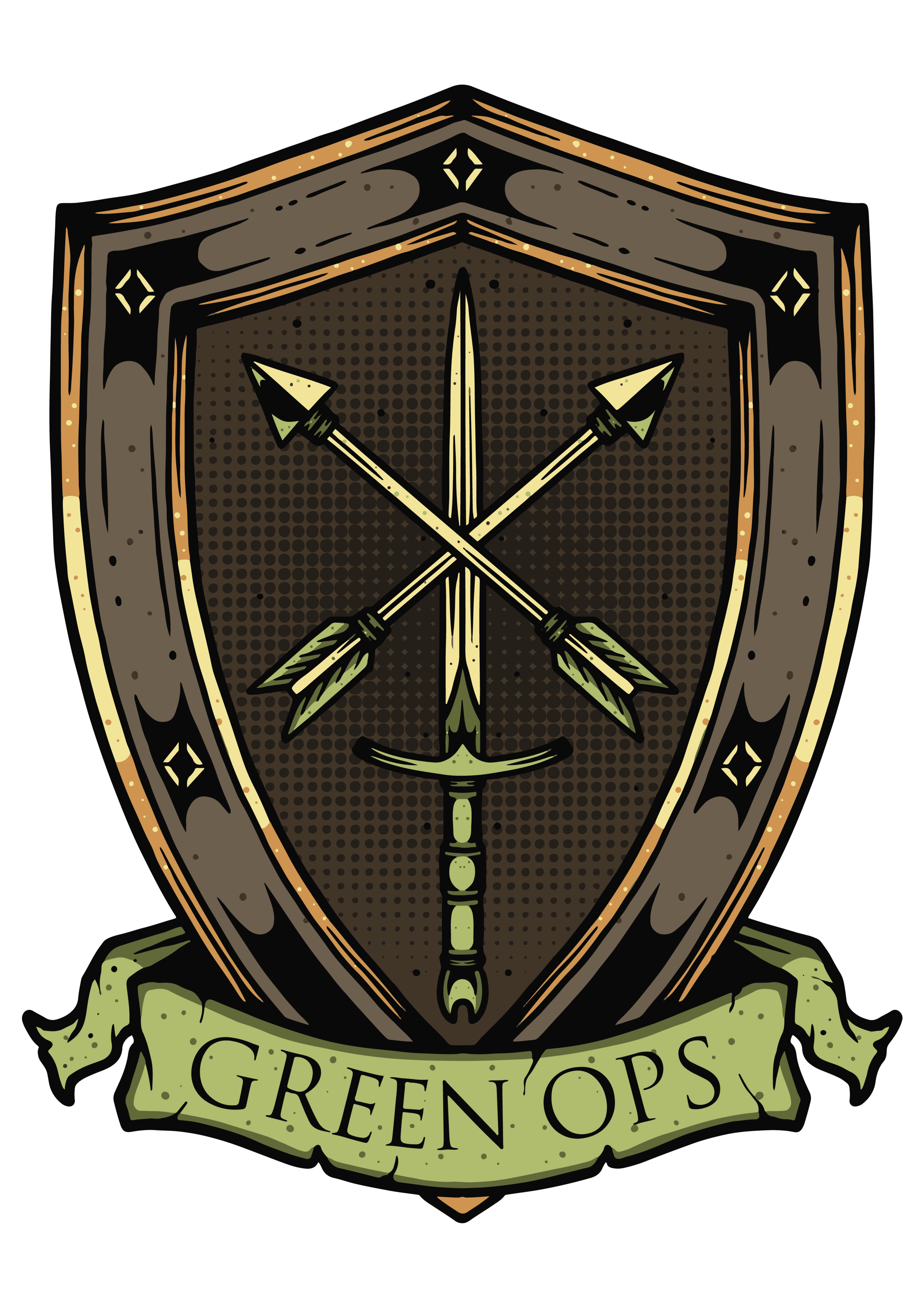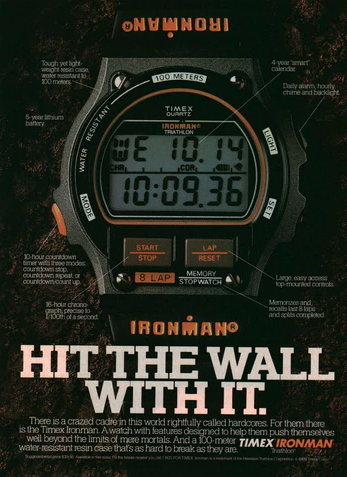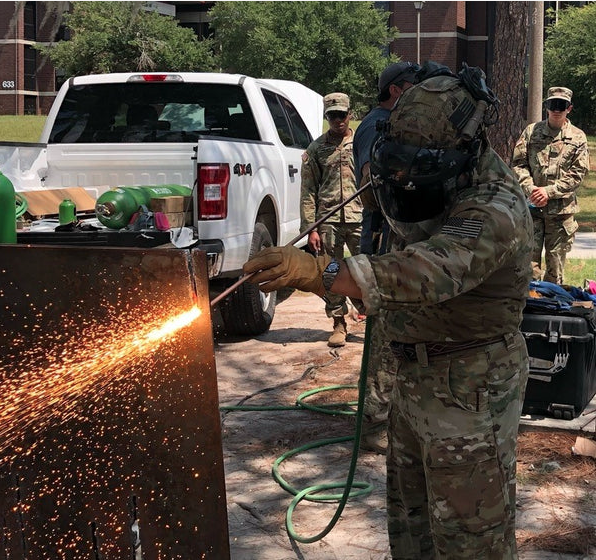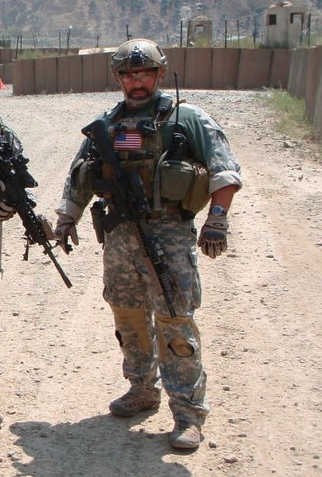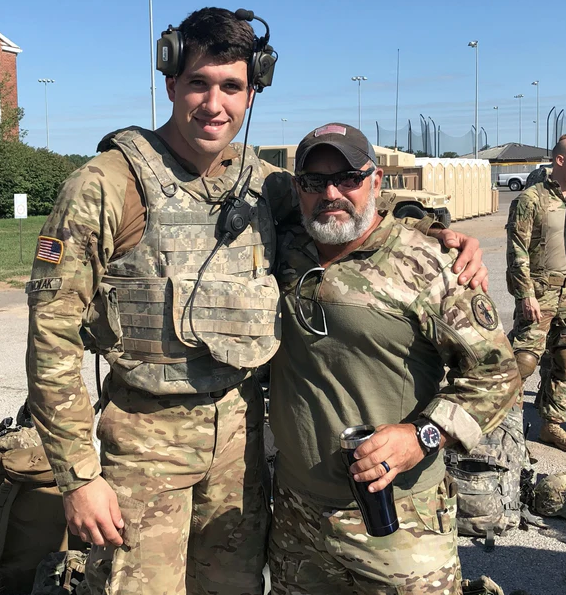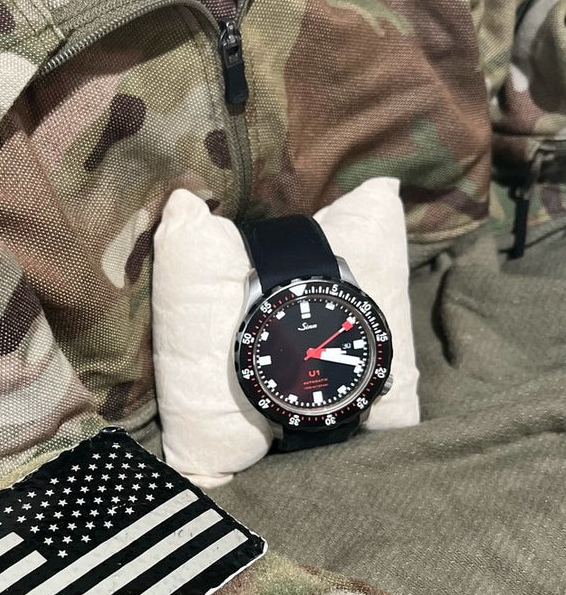Army Special Operations, 9/11, & The Asymmetric Warfare Group - Jose Gordon Part II
Article originally posted at www.watchesofespionage.com
If you haven’t had a chance to read Part I of this Dispatch, please check it out here. If you don’t, you’ll be confused - by Benjamin Lowry
After the initial combat jump and assault into Tocumen Military Airfield and two weeks of searching and numerous assaults, raids, and skirmishes, Jose’s team ultimately just missed capturing infamous dictator Manuel Noriega, unknowingly coming within a few hundred yards of his position before being called off by the powers that be. Despite the disappointment, Jose confirmed his appreciation for a life lived at the pointy end of the spear.
A 1989 ad for a Timex Ironman similar to Jose's. An impressively capable digital family of watches, the Ironman is often overshadowed by the legendary G-Shock.
Decompressing from the disheartening near miss with Noriega, Gordon returned to the United States, eventually purchasing a Timex Ironman with an Indiglo backlight that offered better nighttime legibility than the fading luminescent material on his trusty old Seiko. After a relatively quiet Gulf War deployment in 1991, Jose continued to climb the enlisted leadership ladder of the developing Ranger Regiment. Through numerous near-involvements in global conflicts in Liberia, Somalia, Peru, and other hotspots around the globe, Gordon honed his craft in crisis action and mission planning, helping to create an incredibly complex but ultimately unutilized assault plan for Haiti involving no less than 48 aircraft and the 82nd Airborne.
A young Jose (right) operating in South America with an issued field watch on the wrist. Source: Jose Gordon
While he remembers his Timex serving him well, Gordon missed his old 6309 and was quick to pick up a Seiko SKX007 when they were released in 1996. As we know, for a real watch nerd, the pull of analog mechanical timekeeping can be too much to resist. By the late 90s, Gordon earned his promotion to First Sergeant, the Army’s second-highest enlisted pay grade, while serving at the Ranger Regimental Training Detachment. Hand-selected to serve at West Point as the Senior Enlisted Advisor in 2001, Gordon neared the natural end of his 20-year career, spending his days sharing his decades of combat experience and lessons learned with cadets who would become the future of the Army Officer Corps. As the United States cracked open the 21st Century, Gordon and the rest of the world were unaware of the meteoric events awaiting New York City and the Pentagon on September 11th, 2001.
Hijacked United Airlines Flight 175 preparing to collide with the South Tower of the World Trade Center on September 11th, 2001. Source: Associated Press
On the morning of the 11th, Jose finished his PT and was getting dressed for work when his wife Patty called from the barn at West Point where she had her horses to tell him to turn on his TV because “. . . something big was happening.” Like so many Americans and particularly those within his profession, Jose remembers feeling two things most of all, an otherworldly anger that seemed to ache from deep within his bones paired with the intangible drive to help in whatever capacity he might offer. Around 1030 that morning, with smoke still billowing from the fallen Twin Towers of the World Trade Center, a general from the Pentagon called West Point asking after Gordon. A member of “The Unit” had referred the general to Gordon as someone relatively near Ground Zero geographically speaking who had an impressive reputation in the breaching community. “Breaching” is military parlance for forced entry in tactical scenarios, meaning Gordon was familiar with exothermic cutting and controlled explosive demolitions, skills that were to prove useful in ways the military had never imagined.
Jose in modern times instructs students in exothermic cutting, a key component of any breacher's arsenal, with a Sinn U1 on the wrist. Specializing in breaching throughout his career, Jose never imagined how his skills would be utilized at Ground Zero. Source: Jose Gordon
A New York State Trooper was assigned to meet Gordon at West Point’s Thayer Gate and personally deliver him to Ground Zero. For whatever reason, Gordon reached for his newly acquired Suunto Vector, an early digital watch with altimeter, barometer, and compass functionality, that morning for PT as opposed to his beloved SKX. With Americans advised to shelter in place, the State Trooper raced along empty highways to New York at well over 100 miles per hour. Tracking the minutes on his Suunto’s digital display, time once again seemed to slow as Gordon anxiously awaited his turn to help his fellow Americans in the chaos of Lower Manhattan. While he’d seen the devastation on TV and heard more detailed reports through military channels, nothing could have prepared Jose for the magnitude of destruction he would face at Ground Zero. With 19 years in the Army, almost all of which with the Ranger Regiment, Gordon had seen his share of death and destruction at the frayed edges of modern civilization, but this was something else altogether. This was the United States.
Gordon worked at Ground Zero from September 11th to the 11th of October, serving as one of very few active duty military members involved in the early recovery efforts, alongside virtually every imaginable federal and local government agency. While Jose was clear when we spoke that he doesn’t wake up at night remembering the countless faces of the dead he’s seen in combat, he admitted he vividly remembers the faces of the dead unearthed at Ground Zero, ranging in expression from placid to horror-stricken. He also recalls the immense efforts taken to recover and identify the fallen and missing, with FBI Crime Scene Technicians occasionally stopping Gordon to point out the odd pink stain on a concrete slab, the product of human beings crushed between floors under the immense pressure of a falling skyscraper. A sour construction site smell permeated the area alongside an eerie silence so pervasive it could almost be heard above the din of dozens of generators. Amid the smoke, rubble, sweat, blood, and innumerable tears of the somber, post-apocalyptic scene, anger welled in Jose’s heart.
Jose's Suunto Vector and hardhat, both of which were worn continuously while working at Ground Zero. Source: Jose Gordon.
Returning from Ground Zero, Gordon was desperate to find a way into the developing conflict in the Middle East. Unfortunately for him, the Army had other ideas, insisting he serve his swansong tour in South Korea in an advisory leadership role. With firsthand experience at Ground Zero scraping the remains of fallen Americans from the rubble, there was no way Gordon was going to miss his chance to bring the fight to the enemy. After twenty-one years, Gordon chose to retire from the Army, the galvanizing force of his adult life, to look for another way. A few months working with legendary firearms manufacturer Heckler & Koch was a good start, with Gordon helping to develop both the HK416 and XM8, but he still yearned for his place in combat.
During his stint with Heckler & Koch, Jose helped to develop the HK416 and the polarizing XM8, seen here being tested by the US Army in the early 2000s. Source: US Army
Eager to find the rare few with combat experience from before the brand new Global War On Terror, the Defense Intelligence Agency (DIA) recruited Gordon to work as a contractor. For two years, he worked with an Army research lab developing new tactics, techniques, and procedures while also actively deploying with an unnamed special mission unit conducting surveillance and intelligence gathering missions. Unsurprisingly, Jose is careful with what he shares when it comes to describing this part of his life. Eventually, Gordon was recruited to help form the Asymmetric Warfare Group (AWG), a blend of active duty military and civilians charged with embedding among both conventional and special operations units to identify gaps and develop solutions to increase combat effectiveness and what the Army calls “Soldier Survivability”. Like many watch nerds, Gordon was also a gear nerd, and the new role seemed tailor-made for Jose’s strengths.
Jose in his AWG days with a Suunto Observer on the wrist. Source: Jose Gordon
Far from sitting on the sidelines taking notes, advisors like Gordon deployed and fought alongside military units at the darkest corners of the wars in Iraq, Afghanistan, and numerous other locations Gordon opts not to name. The core of Jose’s job was figuring out what these units needed firsthand, a job that meant accompanying the warfighters no matter the mission or how deep in the shit they managed to get. With most of their operations taking place at night, Jose picked up a Luminox Navy SEAL with tritium tubes for illumination shortly after leaving the Army. When the tritium began to fade, an AWG teammate directed him to Traser, another popular maker of military watches that leaned into tritium. Of all of the watches he wore in combat, Gordon counts his two Traser watches, a P6600 and a Commander as among the best, being incredibly durable and perfectly legible in the darker conditions where people like him thrive.
Jose training his nephew, currently serving in the US Army, in the ways of subterranean warfare with his trusty Sinn U1 on the wrist.
By 2007, Gordon met Dave Hall, a retired US Navy SEAL who also happens to be a passionate watch enthusiast. If you haven’t read our Dispatch article about Dave’s life in the SEAL Teams. Dave turned Jose onto Sinn, a German brand known for utilitarian tool watches. Gordon purchased a U1 that same year and has worn it almost daily ever since. At this point, it’s important to note that Gordon was in his fifties and still found himself in combat situations while serving AWG on a consistent basis, ultimately seeing even more combat as a civilian contractor than he did on active duty until the AWG was disbanded in 2020.
Jose's Sinn U1 has seen some shit. Source: Jose Gordon
Over the course of 40 years on the front lines, Gordon served with distinction both within the US Military as well as in civilian government contractor roles, amassing an impressive reputation within the special operations community. Despite his incredible background and experiences, Jose is humble almost to a fault, coming off ego-free and quicker to talk about how much he likes his Sinn U1 than he is to brag about his special operations combat experience. Jose’s unique experiences working with military gear and the government procurement process have led him to have an intimate understanding for sorting the necessary elements of a tool watch from the marketing fluff, and it’s no surprise to see his career influenced by brands like Seiko, Timex, Luminox, Traser, and Sinn. Like a number of individuals featured on the W.O.E. Dispatch, Jose is further evidence that a surprising number of the military elite continue to favor mechanical analog watches even in demanding combat scenarios, which should mean they’re solid enough for the rest of us not to worry.
These days, Jose stays busy sharing his lessons learned with the next generation of warfighters. Source: Jose Gordon
Today, Gordon works part-time with the Irregular Warfare Technical Support Directorate as a Subject Matter Expert on subterranean warfare. He also shares his vast experience in weapons and tactics training working with Green Ops, a firearm and security training company, while also owning his own consultancy providing operational and tactical advice to the government. If you’d like to talk watches, guns, or gear with Jose, which I highly recommend, he can now be found on Instagram @rgrguns. He’s new to Instagram, and I’m counting on you guys to show him a warm welcome.
About The Author: Benjamin Lowry is a US Coast Guard veteran and commercial diver turned watch writer. These days, Ben splits his time between writing and video production in the watch industry and managing @SubmersibleWrist, a watch spotting account dedicated to military and commercial divers.
